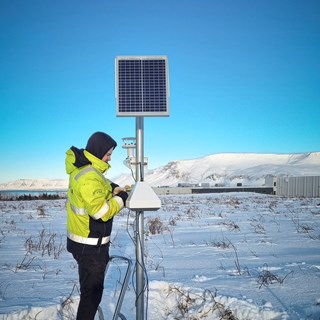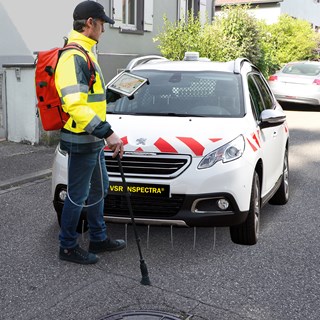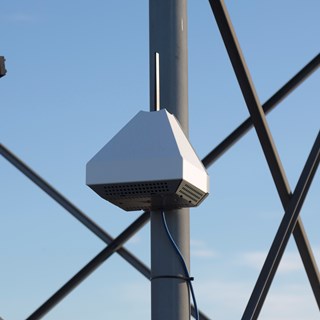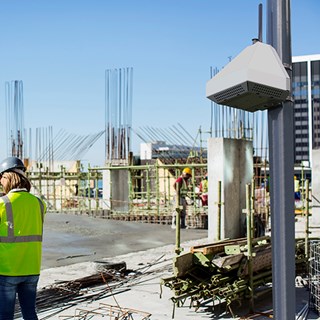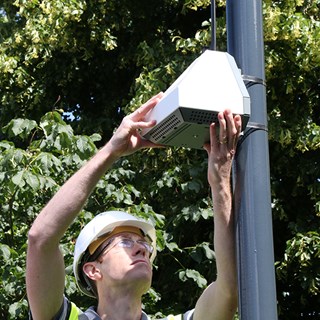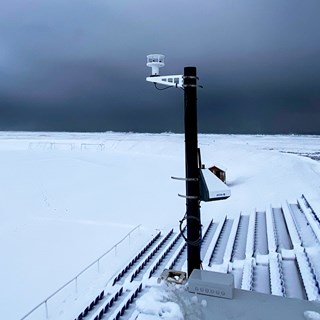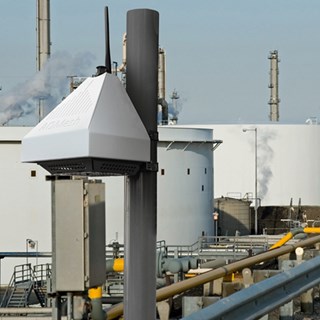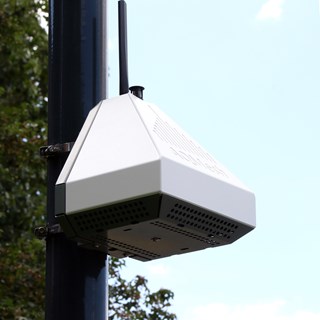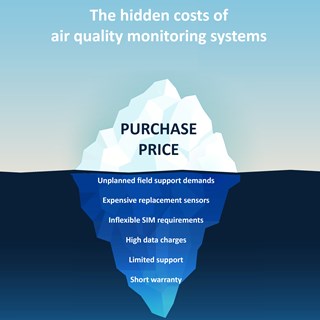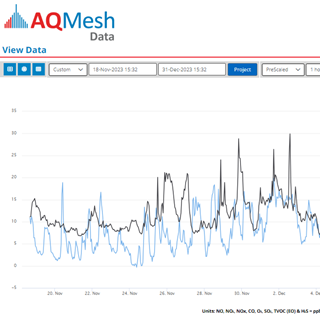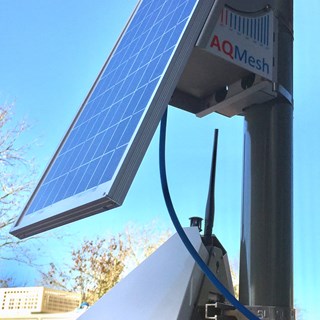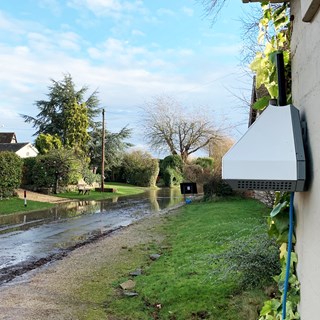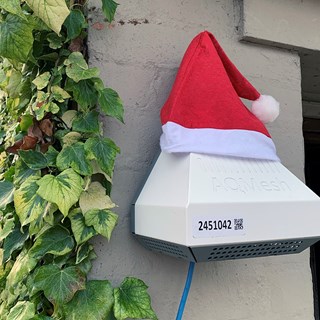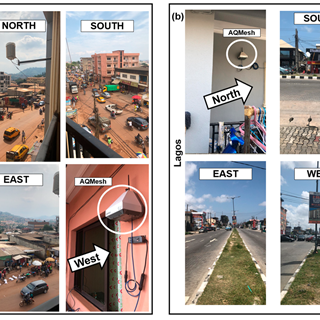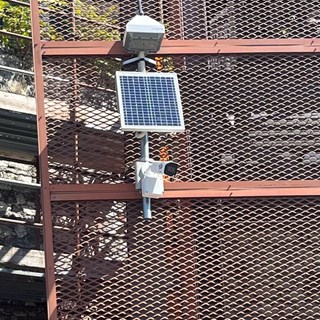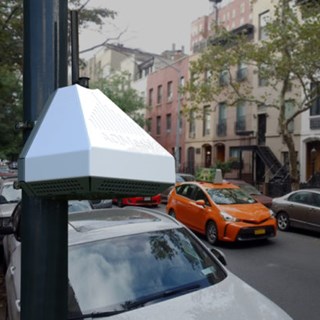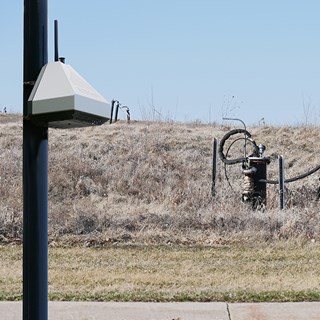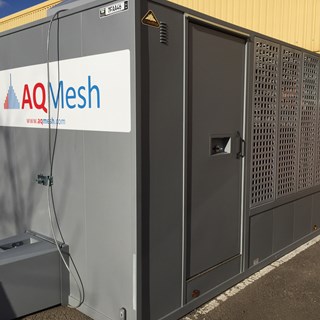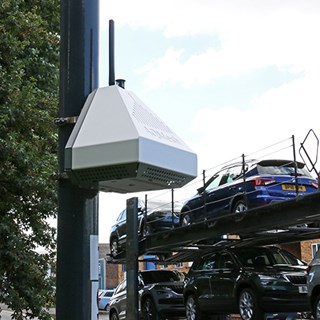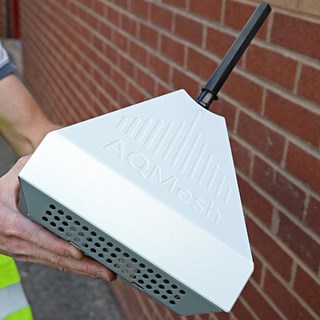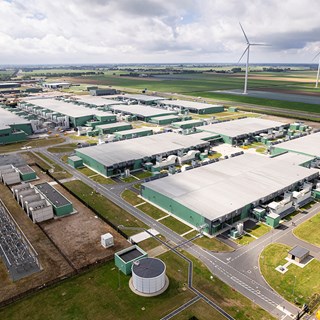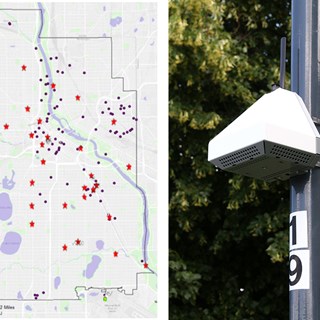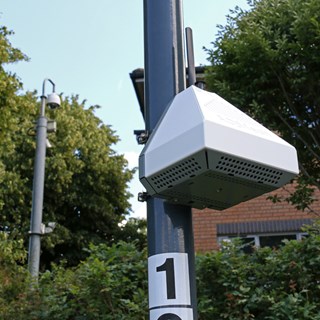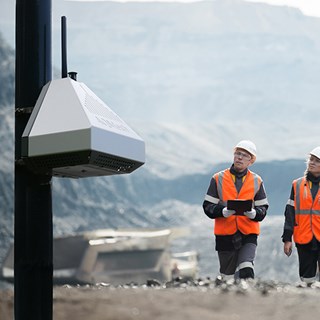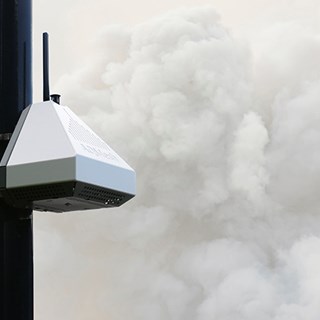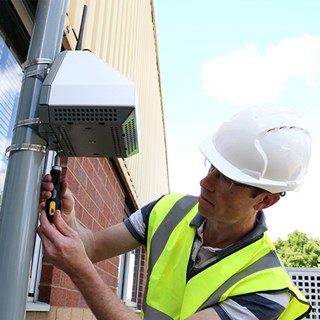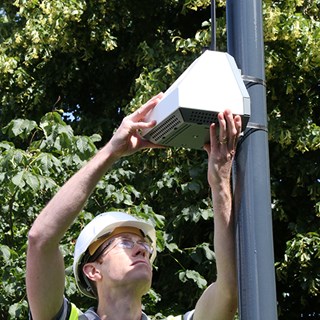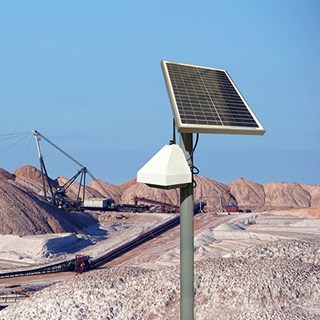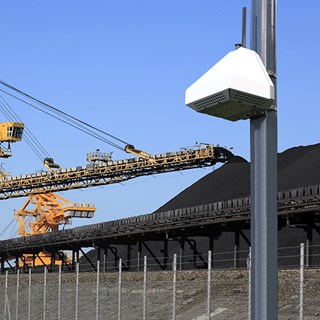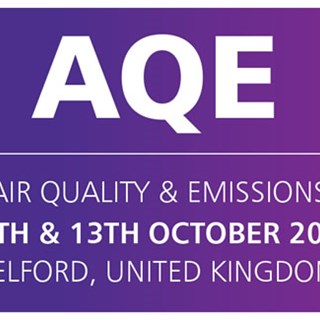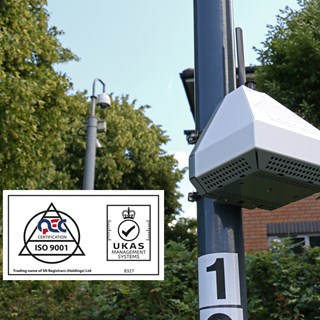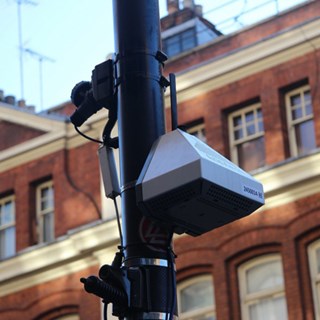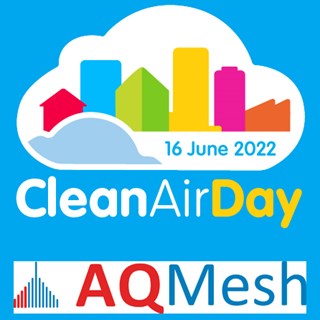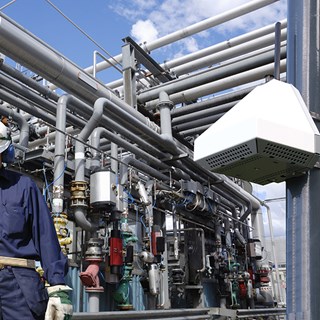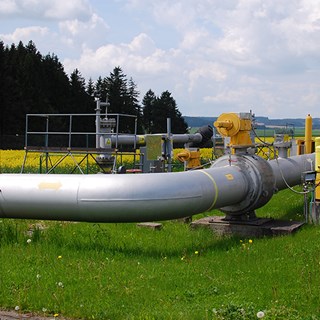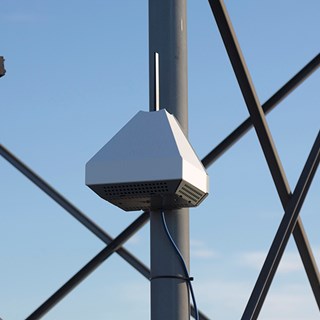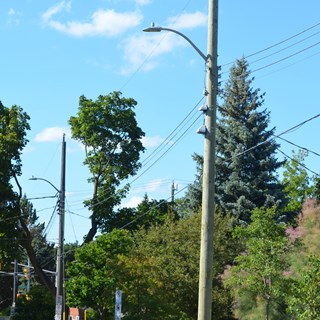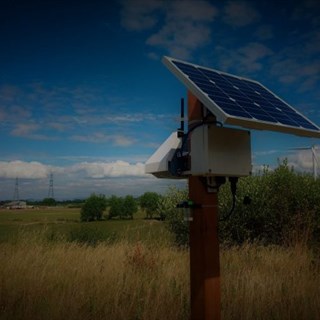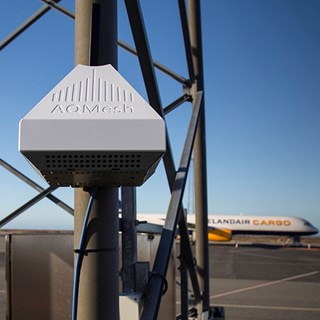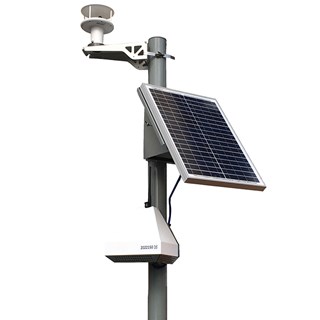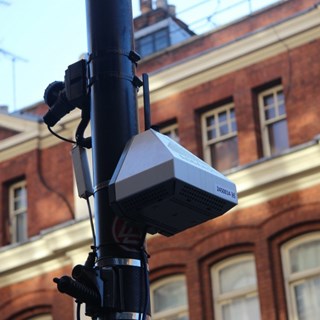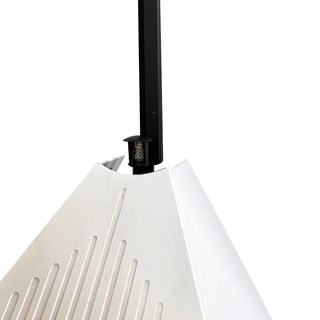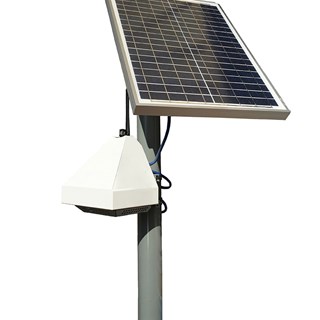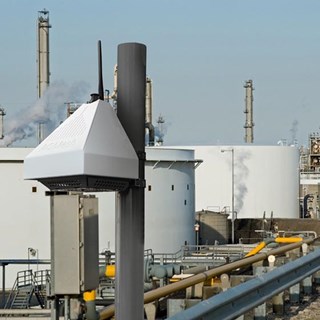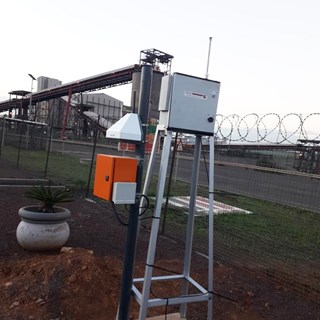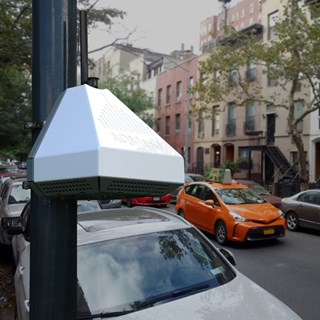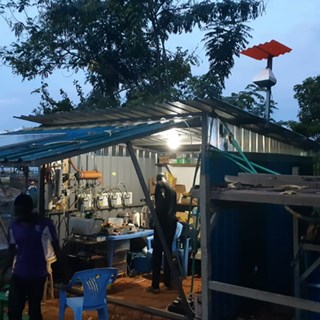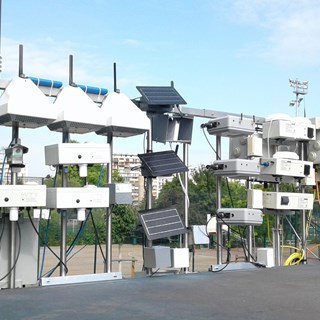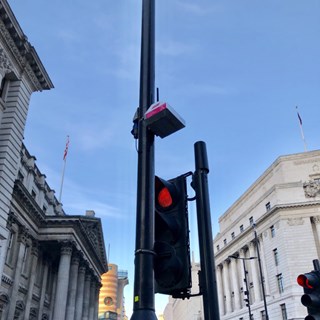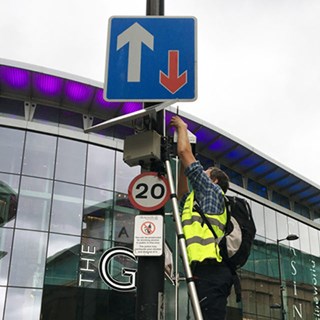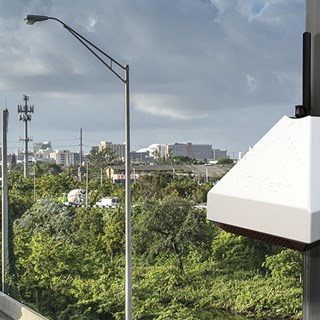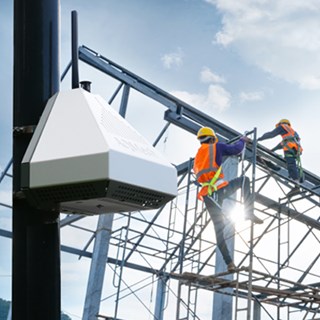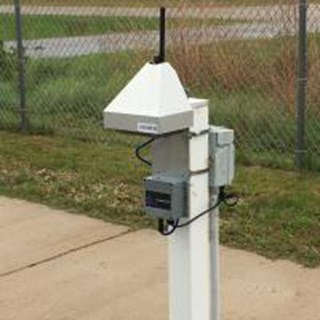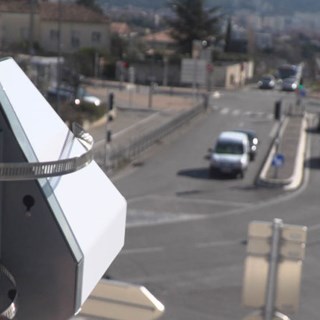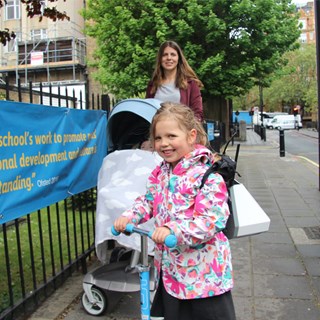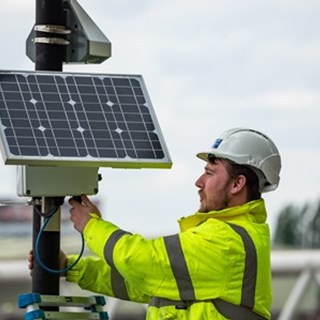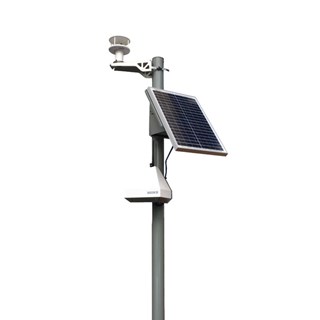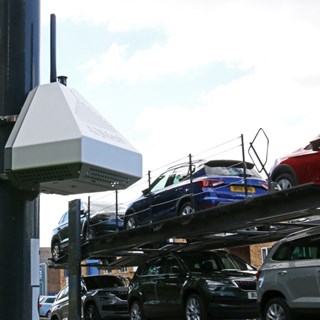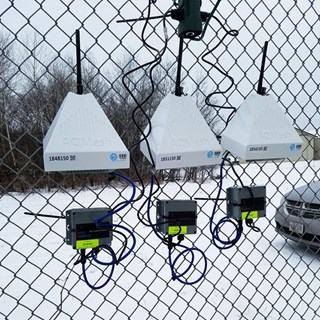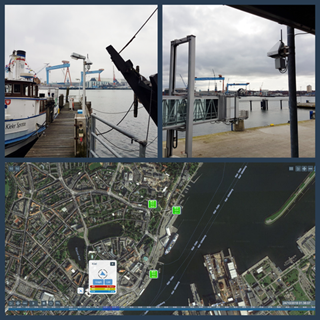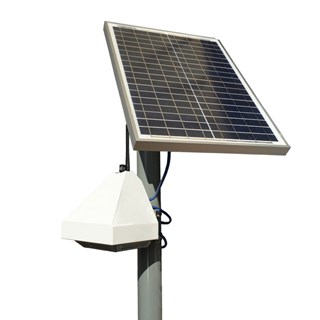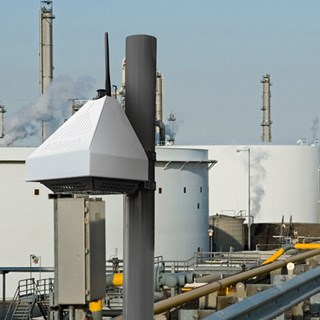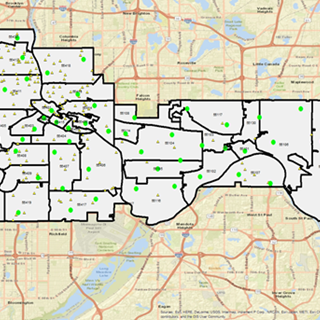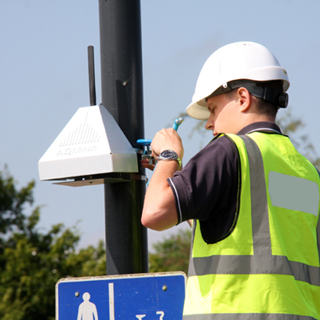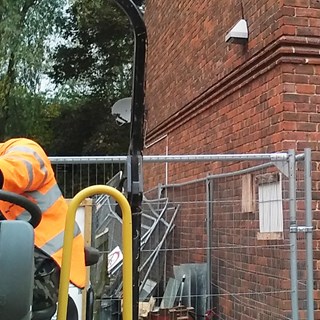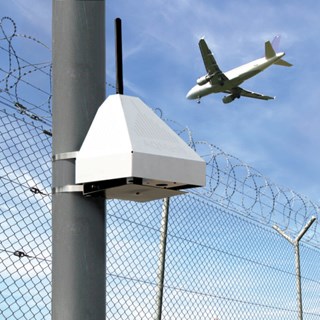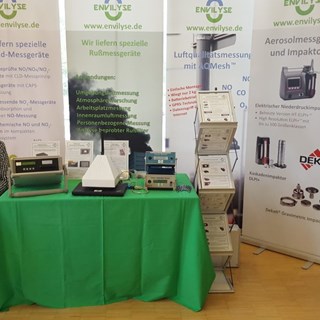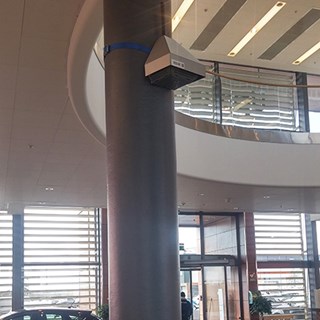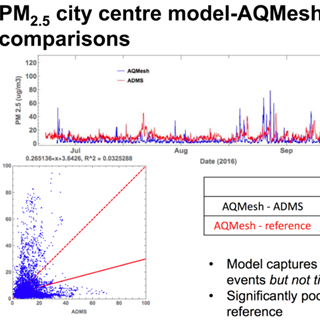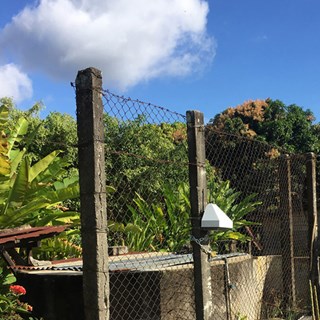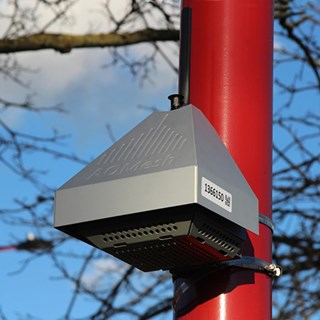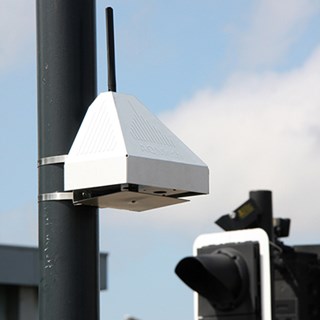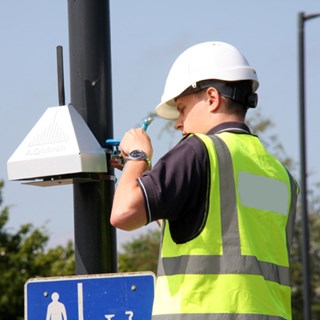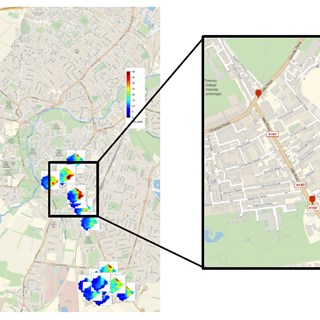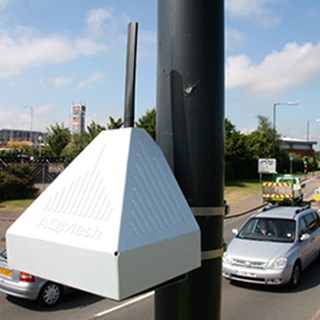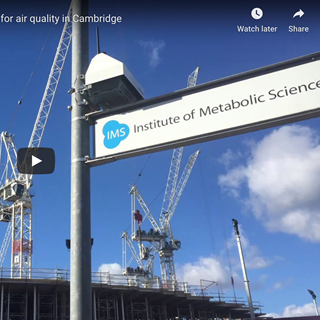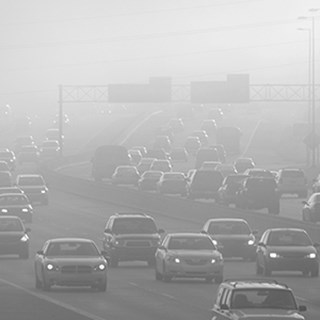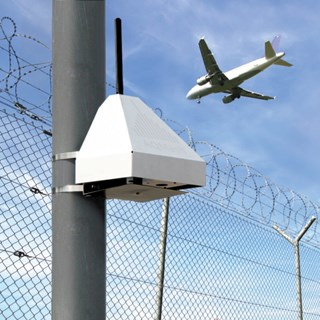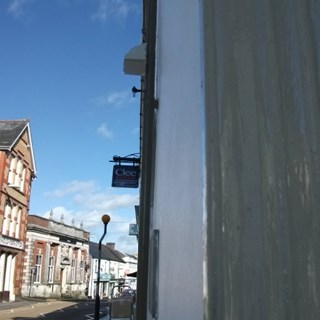Each time we think we have found a spectacularly remote monitoring location, an even more inaccessible spot is reported by one of our users. Full-day trips to visit a location have now been beaten by customers who need to charter a plane to reach them. So, remote diagnostics and support are very important.
Read MoreDid you know that we have always been part of wider group of companies, offering a portfolio of emissions, leak detection and gas stream monitoring products, software and services, specialising in methane?
Read MoreThere’s no doubt that small sensor systems can have an advantage over their cumbersome reference station cousins - in terms of maintenance requirements. We are often asked about ‘service’ requirements for our pods and the honest answer is that the default position, in normal working conditions, is ‘none’. However ..
Read MoreOur pods continue to be pretty popular among environmental and engineering consultancies, both here in the UK and further afield, so we asked some of them what appeals to them most about AQMesh. We were pleasantly surprised by the range of responses we received although there were a number of recurring themes.
Read MoreWe have some thoughts here at AQMesh about the common features of successful, well-run small sensor air quality monitoring projects. This is our list, but we’d love to hear your ideas.
Read MoreWe are often asked by customers whether AQMesh can operate in cold conditions. Long-term use at temperatures well below freezing, with ice and snowfall, is indeed challenging. Cold weather operation has been key to AQMesh – improved upon and proven in the field – for over 10 years. The main features, described below, have been most recently been put to the test in Iceland.
Read MoreIf you are responsible for air pollution around an oil, gas or industrial site, you have a range of options at different price points. AQMesh offers a cost-effective way to continuously monitor ambient air quality, as frequently as every minute, with readings accessed securely online and user-settable alerts.
Read MoreA UK local authority installed nine AQMesh systems at different points across a busy town, measuring nitrogen dioxide (NO2) at 15 minute intervals, monitoring 24/7. These locations were established monitoring points, where measurements had been taken previously using diffusion tubes, limited to one average reading every few weeks.
Read MoreAnybody in the market for purchasing a small sensor air pollution monitoring system will need to consider budgets, but it’s not always obvious how the products being reviewed actually compare across their full operational life. A small sensor air quality monitoring system or network can be a significant purchase, so whether project-based or with ongoing monitoring in mind, it is likely that the equipment will be in use for several years. There are six main areas of cost highlighted here, all of which kick in after initial purchase.
Read MoreIs it normal to get excited about a Publicly Available Standard? For us it feels like a long time coming, and this first step on the long road towards an ISO standard for small sensor air quality monitoring is very welcome.
Read MoreAutonomous power can make all the difference in hyper-local air quality monitoring. With particulate matter sampling needing a little more power than passive gas sensors, solar is the go-to power option, rather than internal battery. Most systems require sufficiently little energy that they can be powered by a relatively small solar panel, but it’s the back-up power management that makes all the difference.
Read MoreWe installed an AQMesh pod on a rural road to see the impact of local road closures and increased traffic but we left it in place and have been able to monitor how the air quality changes from autumn to winter. This time covered changing traffic patterns, wood-burning, bonfire night, the Christmas break and then no traffic, with the road closed by floods. So, what did we see?
Read MoreEveryone loves holidays, whether Christmas or anything else, right? So what’s special about ‘air quality’ people? What we get so excited about are ‘free’ experiments, where distinct changes in activity help to peel away the layers of air pollution measured.
Read MoreIt’s great to see the team at the Department of Atmospheric Chemistry, University of Cambridge using their AQMesh pods for another project, this time in Lagos, Nigeria and Yaoundé, Cameroon.
Read MoreHyperlocal air quality monitoring promises to fill in the gaps between sparse reference stations – great, lots more measurements. And each of your lovely small sensor monitoring stations can measure a dozen or more pollutants and environmental conditions – even better. Or is it?
Read MoreThis a great report, full of common sense and helpful advice, applicable globally, particularly where air quality monitoring is currently limited. Limited by budgets, logistics, and many factors discussed so eloquently at the ASIC Ghana conference last month.
Read MoreAQMesh is being used in an innovative intelligent pedestrian crossing system being developed by three collaborators across Italy, Israel and Spain.
Read MoreGenerally, the limiting factor will be budget. The clue is in the name with hyperlocal air quality monitoring, and pollution levels can vary hugely over short distances. NO measurements around streets, for example, are often significantly different from one side of the road to the other, particularly if there isn’t much wind and/or a street canyon effect.
Read MoreOur hydrogen sulphide (H2S) monitoring journey literally started in the sludge lanes of a UK wastewater treatment plant in 2017. Since then, AQMesh has been used effectively in a range of applications.
Read MoreFirst of all, you can’t calibrate using bottled gas, as with reference analysers. Even if you can create a chamber or manifold to pump gases through, electrochemical gas sensors do not respond in the same way to single, dry gases as they do to mixed gases in an ambient environment.
Read MoreWatching the ASIC Ghana conference presentations, it is striking that the same issues come up, whether monitoring in Africa, Europe or America. Many of the challenges relate to boring logistics: where to position measurement units and how to get power to the chosen location.
Read MoreWe know from our customers that they are often monitoring for a particular project, although some are monitoring on an ongoing basis. So why do they always want to buy equipment rather than rent it?
Read MoreA UK train operator is carrying out an air quality baselining project at various points around some of the stations it manages. Monitoring using diffusion tubes or passive sampling has been used around rail infrastructure but the aim here is to use near real-time hyperlocal monitoring to show how pollution levels vary minute-by-minute and across spaces accessible by rail passengers.
Read MoreAQMesh has been used extensively in and around data centres for two main reasons: obligation to monitor emissions from back-up generators and the risk to copper components from hydrogen sulphide.
Read MoreAQMesh Product Manager, Tom Townend, will be presenting at the EPA 2023 Air Sensors Quality Assurance Workshop on Wednesday 26th July at 1pm ET (6pm BST). He will be speaking about our project in Minneapolis and quality control of large sensor networks measuring total volatile organic compounds (TVOC).
Read MoreAQMesh is being used as part of the newly revived Breathe Easy Dallas initiative – a project designed to measure and understand air pollution at neighbourhood level.
Read MoreIf you are considering - or are at the point of buying - a system for local monitoring of air pollution, we have used our decade of experience to offer lists of points to consider. Why more than one list? The critical issues around air quality monitoring vary depending on your project, so we have prioritised points for a range of applications. We hope we have included yours, but please contact us if we can help further.
Read MoreAQMesh is being used for industrial air pollution monitoring around the world because it brings together a range of features and services that have been tailored to the needs of construction, mining, petrochemical and other industrial applications.
Read MoreTo illustrate this point, we can tell the story of 16 pods used in Bangladesh, Pakistan, Vietnam, Philippines and Mongolia. AQMesh was chosen for this project, funded by an international bank, coordinated by an international consultancy and procured through a UK distributor.
Read MoreA network of 22 AQMesh pods was originally deployed in collaboration with Newcastle University and Newcastle City council to monitor air pollution outside schools near major traffic routes. The main objectives of the study were to determine levels of NO2, PM1, PM2.5 and PM10 - and whether these exceeded the WHO guidelines - as well as estimate children’s exposure to harmful particles.
Read MoreThere is a major trend towards industrial operators including oil and gas, petrochemicals, construction, mining and transport – rail and ports, as well as roads – wanting to look closely at air pollution on and around their sites.
Read MoreA wide range of industrial operators, including mining, construction, ports, landfill and the oil and gas industry, are looking more closely at the air quality on and around their operational sites. This is increasingly driven by legislation, Environmental, Social and Governance (ESG) ambitions, to establish a baseline, or to understand and manage potential pollution sources.
Read MoreAQMesh has been long established as the most proven small sensor system for the air quality monitoring market. With an ever-increasing suite of measurement options and proven performance in the harshest environments, AQMesh is ideal for industrial applications.
Read More2023 is set to be a big year for AQMesh’s monitoring of particulate matter, with developments in both hardware and data processing offering improved accuracy across key PM fractions.
Read MoreAQMesh will be exhibiting at the Air Quality & Emissions show in Telford on 12th & 13th October 2022, which this year is running as a live and virtual event. Focussing on air quality and emissions monitoring services, technology and instrumentation, the show offers a variety of industry experts all under one roof, including AQMesh at stand D10.
Read MoreEnvironmental Instruments Ltd, the company which manufactures AQMesh, is delighted to announce it is now ISO9001:2015 certified. ISO9001:2015 is the standard which confirms a business is using its quality management system and processes effectively and consistently to meet the requirements of its customers.
Read More2022 marked 10 years of innovation and leadership from AQMesh. To highlight the team’s experience, ongoing forward-thinking and its commitment to pushing the capabilities of small sensor systems, here are the top 10 things AQMesh developed first and refined since it commercially launched in 2012.
Read MoreWith local councils in England being encouraged to apply for a share of a £7m grant scheme dedicated to ‘reduce the impact of air pollution on public health’, the big question still remains – how can local authorities mitigate air pollution without carrying out hyperlocal monitoring to understand where the problem areas are and identify the pollution sources?
Read MoreAQMesh is currently being used in a number of air quality monitoring initiatives by a range of users. Across the UK, for which today is its annual Clean Air Day campaign, there are a number of pods deployed outside schools, being used by ambulance services, installed at metal foundries and at railway stations.
Read MoreMany small sensor air quality monitoring systems cannot reliably measure coarse particulate matter, or PM10, because of the technology they use. AQMesh’s proprietary optical particle counter (OPC) delivers high out-of-the-box accuracy across all key particle matter (PM) fractions thanks to its bespoke, in-house design.
Read More2022 has seen AQMesh taken up as a proven and flexible air quality monitoring system by more users, including several in mining and construction. New users include mining operators in the Middle East and Africa, and construction companies in Italy, UK and Canada.
Read MoreAQMesh is one of three winners of the Air Quality & Sport Challenge, an initiative by ThinkSport whose aim is to create solutions to help sport organisations tackle climate change.
Read MoreAQMesh owner, ECOTEC, today announced a strategic minority equity investment by Archrock, an energy infrastructure company with a pure-play focus on midstream natural gas compression.
Read MoreAQMesh has been commercially available since 2012 – making it the most proven and relied upon small sensor system on the market. During the last ten years, the team at AQMesh has never stood still by continuously improving the design and functionality of the product in response to the many challenges that localised air quality monitoring has presented around the globe.
Read MoreA recent study using a network of five AQMesh pods has found that small sensor systems with a properly managed QA/QC process offer valuable air quality measurements, complementing data from expensive reference equipment.
Read MoreEcotec International Holdings, LLC (“ECOTEC”), a global leader in methane emissions monitoring, is pleased to announce a strategic investment by funds managed by Intrepid Investment Management, LLC.
Read MoreRedmore Environmental have used AQMesh to perform baseline air testing on land at a proposed Energy from Waste (EfW) facility in Heysham, Lancashire (UK).
Read MoreFive AQMesh pods are currently installed around Keflavic airport in Iceland to monitor gases produced by the nearby volcano at Fagradalsfjall, including hydrogen sulphide (H2S), sulphur dioxide (SO2) and nitrogen dioxide (NO2).
Read MoreA UK local authority measured the difference in local air pollution levels when reopening roads that had previously been closed for social distancing purposes as part of Covid-19 mitigation efforts.
Read MoreTwo AQMesh pods measuring airborne particulate matter have been loaned to the University of Cambridge, ahead of the COP26 meeting in Glasgow, to support research into measurement of particulate matter.
Read MoreAQMesh is now being supplied and supported directly in the UK, as a positive step towards providing fast, direct manufacturer support. The UK-based manufacturer has already been supporting global users directly since the product first launched ten years ago and is now extending that same support to UK customers.
Read MoreEcotec International Holdings, LLC (“ECOTEC Group”), owner of Environmental Instruments Ltd., the manufacturer of AQMesh, is pleased to announce the acquisition of Gas Data Limited and its parent company, Innovational Technologies Limited, which is expected to strengthen the state-of-the-art portfolio of highest quality gas detection, gas analysis and air quality monitoring solutions.
Read MoreData collected as part of the UKRI SPF Clean Air Program has proven that AQMesh out-of-the-box performance for PM2.5 exceeds new US EPA targets, with excellent results for PM1 and PM10 as well.
Read MoreAQMesh has partnered with Warwick District Council and Stratford District Council to install air quality monitoring pods at six local primary schools, as part of this year’s national Clean Air Day.
Read MoreThe Breathe London pilot, which used 100 AQMesh pods as part of a ground breaking city-wide network of air quality monitoring stations, proved that small sensor monitoring technology can be deployed successfully to give results comparable with those of reference equipment.
Read MoreWhilst there may be a growth in city-wide communications integration, “big data” and public interest in local air quality, the challenges of monitoring complex atmospheric chemistry have not changed. Integrating “sensors” can sound straightforward but information about air quality around a city must be handled carefully.
Read MoreA collaborative research project between City of Kitchener, Wilfred Laurier University and Hemmera Envirochem Inc, which uses AQMesh pods installed across Kitchener, will be presented at the Pacific Northwest SETAC Annual Conference in the USA on April 15th-16th.
Read MoreAQMesh has announced this week that all new pods will receive a free 5-year manufacturer’s warranty, as opposed to the standard 12-month guarantee. The new 5-year pod warranty underpins years of proven product quality.
Read MoreThe new AQMesh LTE CAT M1 modem uses the latest LTE (Long Term Evolution) communications standard, including support for NB-IoT (machine-to-machine).
Read MoreSmall sensor air quality monitoring devices can be mounted flexibly, offering localised air quality information and data analysis, but they vary in what they can measure, how accurately they measure it, and how readings are accessed by users. Critically they also vary in terms of the reliability of data delivery.
Read MoreRefinement and development of the AQMesh small sensor air quality monitoring system over many years, and through numerous global co-location comparisons, brings a wealth of unique benefits.
Read MoreThe Breathe London project has this week released a 3D data visualisation story created by the Environmental Defense Fund Europe and Google.
Read MoreFour AQMesh pods are to be deployed at individual remote monitoring locations near schools in Kitchener, forming a small network to measure levels of nitrogen dioxide (NO2), particulate matter (PM2.5 and PM10) and carbon dioxide (CO2).
Read MoreIn 2015 a team from the University of Bonn began monitoring air quality around the Geiranger fjord, Norway. In this pilot study pollutant gases were measured using AQMesh, as well as particulate matter. From 2016 the team installed AQMesh pods at different points around the Fjord.
Read MoreBreathe London preliminary analysis results reveal substantial NO2 pollution reductions after the UK government implemented restrictions to reduce the spread of Covid-19, particularly after social distancing was strongly encouraged on 16 March.
Read MoreTechnology is critical to so many essential services during the current global COVID-19 crisis, but it is also allowing local air quality to continue to be monitored, in real-time, across the world. Small sensor air quality monitors such as AQMesh pods can use cloud data storage to ensure that air quality information is stored and accessible even when staff are not able to visit equipment.
Read MoreMining applications in Southern Africa which use AQMesh include copper, phosphate platinum and coal extraction and handling. Typically the mining client will set up a network of pods to monitor in key locations around the perimeter of the facility, potentially including nearby sensitive zones, such as schools.
Read MoreThe small sensor air quality monitoring world has moved on during the last three years and we have identified several new challenges and benefits relating to the continual development of air quality monitoring technology.
Read MoreThree AQMesh pods have been monitoring air quality in Kenya as part of a study to measure the impact of using biogas as an alternative cooking fuel.
Read MoreThe results of the 2019 AIRLAB Microsensors Challenge* were revealed in Paris on 21st January and AQMesh was awarded the highest score for accuracy of all products presented for monitoring of outdoor air quality.
Read MoreThe Breathe London project has been announced as the winner of a SMART 50 Award by Smart Cities Connect, within the Digital Transformation category.
Read MoreA network of sensors has been set up in Newcastle in order to give policymakers a more accurate picture of the air being breathed by children. The project is a collaboration with Newcastle University and Newcastle City Council who have installed 22 air pollution sensors outside schools that are located close to major roads.
Read MoreLast month Environmental Defense Fund Europe (EDFE) together with Mayor Sadiq Khan are releasing the second wave of data from Breathe London, an ambitious collaborative project to measure and map air pollution across the capital.
Read MoreWhilst not the only AQMesh pods still in regular use since the product was commercially launched in 2013, two AQMesh pods are still in use in Spain and demonstrate the long life of this small sensor air quality monitoring system.
Read MoreA study published in the Journal of the American Medical Association has found that long-term exposure to poor air quality can have the same damaging effect as smoking 20 cigarettes a day, with air pollution shown to be more dangerous than passive smoking.
Read MoreMinnesota Pollution Control Agency (MPCA) has been monitoring Minnesota’s air quality for a number of years, and it is generally considered to be good. However, MPCA wanted to understand how air pollution varies across small distances in order to minimise vulnerable communities’ exposure to harmful pollutants.
Read MoreDetailed information on London’s (UK) air pollution is now being published on breathelondon.org, the website for a new collaborative project to paint a clearer picture of the city’s air quality.
Read MoreSchools near Glasgow have been monitoring air quality as part of a project aiming to reduce the levels of pollution emitted by vehicles as they drop off and collect children. The project is part of a ‘Beat the Street’ initiative that was granted £50,000 from a new £1million fund to increase walking, cycling and sustainable travel in Scotland.
Read MoreFollowing a successful evaluation phase in 2018, AQMesh small sensor air quality monitoring ‘pods’ have been selected for use in a project to control the ventilation of a road tunnel in the city of Marseille.
Read MoreSupporting the aims of Clean Air Day today, 20th June 2019, the Guardian has published a short film demonstrating the changing levels of pollution that children are exposed to as they walk to school in London.
Read MoreSuite à une phase d’évaluation et en raison de sa qualité de mesure, la solution AQMesh a été sélectionnée dans le cadre d’un projet d’asservissement de la ventilation d’un tunnel routier dans la ville de Marseille.
Read MoreA new network of air pollution monitors has been installed to record emissions from cruise ships docking in Greenwich.
Read MoreThe AQMesh small sensor air quality monitoring system already offers flexibility of monitoring location – through independent power and communications – as well as high data quality and traceability.
Read MoreFew people know how clean the air is where they live, work, exercise or where their children go to school. Although air quality can be shown to vary significantly over short distances, air pollution is generally measured using a small number of large, expensive and high quality monitoring stations.
Read MoreNorth Americans will be well aware of the particularly harsh weather in the early months of 2019, but AQMesh has taken conditions in its stride. The AQMesh stated operating range of -20°C to + 40°C is backed up by long-term operation across a wide range of climates.
Read MoreIn an inter-connected world, air quality is increasingly becoming another measurement made available to the public, but how reliable is the data?
Read MoreAQMesh has been used in a project at the Port of Kiel, Germany, to measure emissions of nitrous oxides (NOx) and fine particulate matter (PM) around its cruise ship terminal.
Read MoreRecent co-location comparison trials against certified reference equipment continue to prove AQMesh performance and reliability for localised air quality monitoring.
Read MoreThe UK’s first Urban Observatory, led by Newcastle University, has been designed to provide a digital view of how cities work. AQMesh air quality monitoring equipment is being deployed across Newcastle and Gateshead.
Read MoreAQMesh has been measuring ozone (O3) using small sensors since 2011 and the readings from the latest generation electrochemical sensor, using AQMesh v4.2.3 processing, as compared to co-located certified reference readings, consistently show an R2 of over 0.9 with an accuracy ±10ppb (20µg/m3).
Read MoreOn Sunday 13th May 2018, Cardiff Council organised a car-free day in the city’s central area. As a result of this event air quality monitoring data showed an average 69% drop in nitrogen dioxide (NO2) – one of the pollutants of greatest public health concern.
Read MoreAQMesh is now able to offer CO2 and H2S within its range of gas options for local air pollution monitoring. The NDIR CO2 sensor, which can be offered within a single AQMesh pod alongside five other gases out of NO, NO2, O3, CO, SO2 or H2S, as well as PM1, PM2.5, PM10, temperature, pressure and humidity, has been developed to deliver a higher performance than those typically used for indoor air quality monitoring.
Read MoreLondon Mayor Sadiq Khan has launched a new, street-by-street monitoring system that will help to improve that capital’s air quality. From July 2018, and operating for a year, London will benefit from what is being described as the world’s most sophisticated air quality monitoring system.
Read MoreExtensive research has shown that indoor air quality is often worse than outdoors. Closed system buildings trap harmful particles inside, and external air intakes can bring in more polluted air from outside.
Read MoreMinnesota Pollution Control Agency (MPCA) has purchased fifty AQMesh pods to measure key air pollution gases and particulate matter across fifty different zip code areas.
Read MoreThe team at AQMesh continue to receive many enquiries from smart city initiatives and are concerned that integrators risk undermining entire projects by distributing meaningless or misleading air quality information.
Read MoreOxford City Council has been managing two AQMesh pods, supplied by Air Monitors Ltd, in order to monitor the impact the new Westgate centre is having on local air quality.
Read MoreA new paper published by the American Chemical Society (ACS Sensors) reviews the use of amperometric electrochemical gas sensors for monitoring inorganic gases that affect urban air quality. Written by John Saffell and Ronan Baron of Alphasense, the paper gives a full explanation of how the sensors work, how they have developed and a review of how they have been used.
Read MoreIn October, the AQMesh distributor in Germany was personally invited to Austria to take part in an annual conference for the ambient air community.
Read MoreTwo AQMesh pods were used to measure NO, NO2, O3 and CO during May and June 2017 at Upplands Motor Stockholm AB car dealership in Sweden, located on the highway between Stockholm city centre and Arlanda airport.
Read MoreAQMesh was selected to be included in the 2017 Parliamentary Review as an industry leader within the environmental technology sector.
Read MoreCleves School in Weybridge, Surrey (UK) has used AQMesh to measure pollution at the primary school’s entrance.
Read MoreAt the IAPSC in May 2017, Professor Rod Jones of the University of Cambridge presented his case study on large scale deployment of sensors, which included showing how AQMesh can be used to discriminate between local sources of pollution and regional sources of pollution.
Read MoreRecent co-location comparison trials using the latest AQMesh processing (v4.2.3) have further proven AQMesh performance with impressive R2 values in excess of O.8 and 0.9 for NO2 in Benelux, Slovakia and Spain.
Read MoreLeading small sensor air quality monitor, AQMesh, has recently been shown to work alongside passive samplers and air quality models, as well as complementing reference station networks.
Read MoreThe AQMesh team has carried out a test which shows that calibration (scaling) of AQMesh against one, or ideally several, diffusion tubes, is a viable option when no local reference station is available.
Read MoreOn 9th April The Sunday Times reported that employers have been told they are legally obliged to protect their staff from diesel fumes — and could be sued if workers develop cancer later in life.
Read MoreIT teams are attracted by how readily data can be integrated and communicated whilst air quality professionals focus on how meaningful the air quality readings are.
Read MoreSmart city projects increasingly seek to include air quality measurements. If city authorities and the public are being asked to act based on air quality readings they must be credible.
Read MoreAt the RSC AAMG event on ‘Air Quality Monitoring: Evolving Issues and New Technologies’ Professor Rod Jones of the University of Cambridge presented a paper showing very encouraging results.
Read MoreAn AQMesh pod used in the recent Citi-Sense project in Norway was returned to us at the end of the project, and we were surprised at the condition.
Read MoreA new generation of air quality monitors is now being offered to provide localised, real-time air quality readings – but the potential benefit is only just starting to be realised.
Read MoreThe emergence of sensors capable of measuring the gases and particles that make up air pollution, especially in cities and industrial areas, has driven many academic studies which evaluate the sensors and compare performance against reference methodology.
Read MoreAQMesh has an impressive collection of global users and performance results measuring ambient air quality in applications ranging from traffic planning and urban hotspots to industrial fence line monitoring.
Read MoreSituated in the south west of Wales (UK), in a largely rural area bordering the Brecon Beacons, Carmarthenshire’s air quality is predominantly good.
Read More
